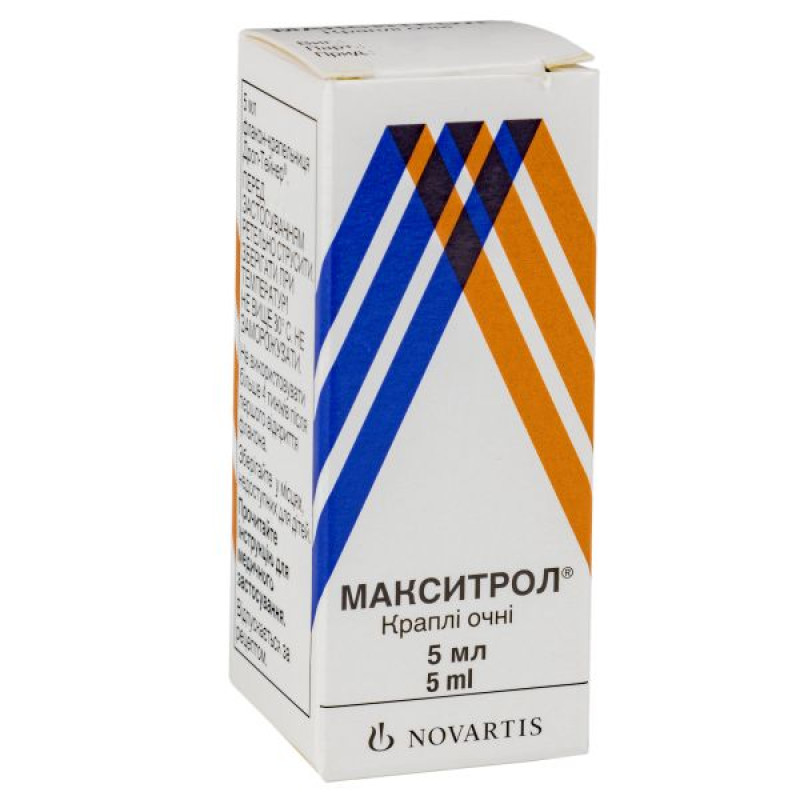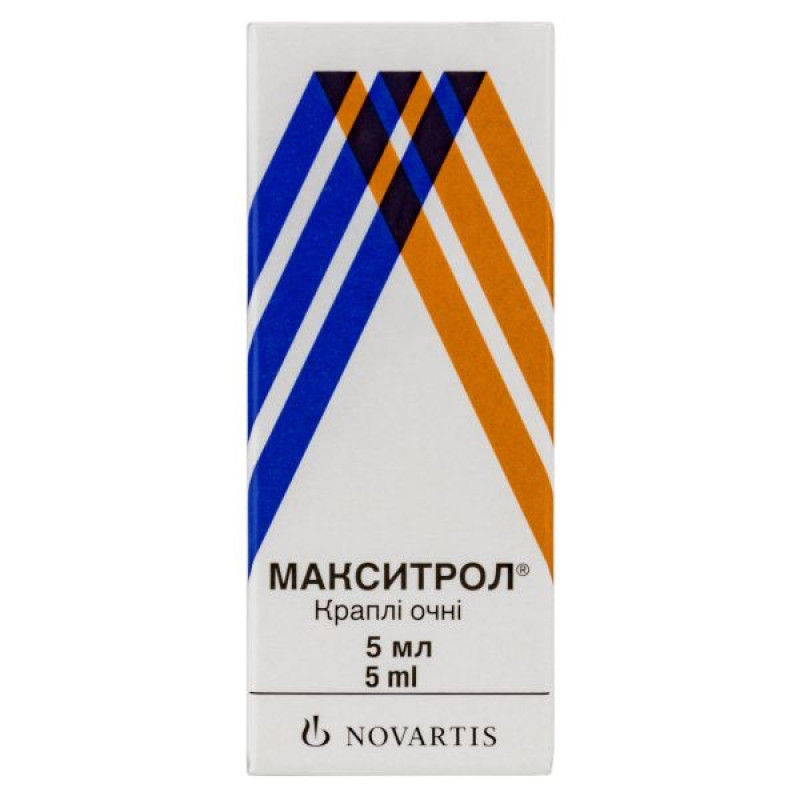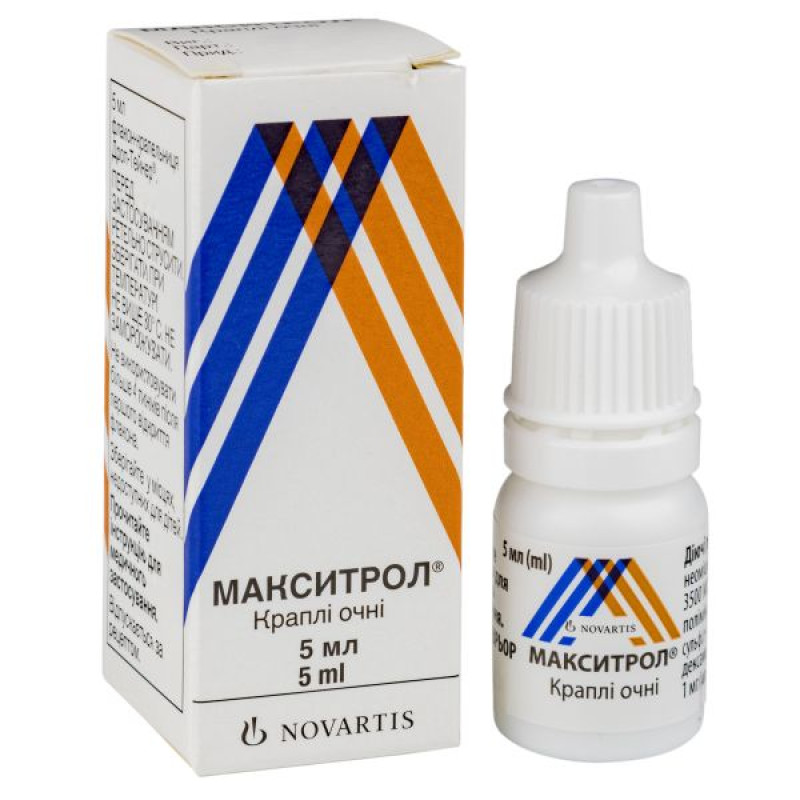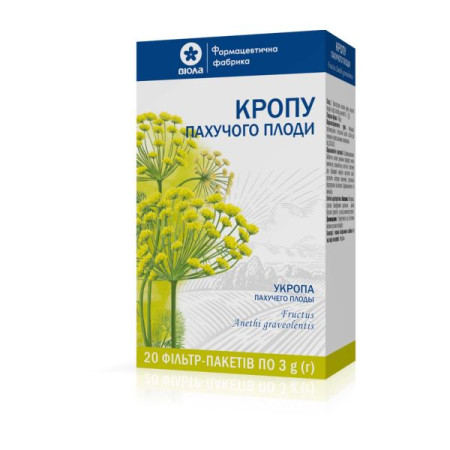Maxitrol eye drops dropper bottle drop-tainer 5 ml

Instructions for Maxitrol eye drops dropper bottle drop-tainer 5 ml
Composition
active ingredients: dexamethasone, neomycin sulfate, polymyxin B sulfate;
1 ml of suspension contains dexamethasone 1 mg, neomycin sulfate 3500 IU, polymyxin B sulfate 6000 IU;
excipients: polysorbate 20, sodium chloride, concentrated hydrochloric acid and/or sodium hydroxide (for pH adjustment), hypromellose, benzalkonium chloride, purified water.
Dosage form
Eye drops.
Main physicochemical properties: opaque suspension without agglomerates from white to pale yellow in color.
Pharmacotherapeutic group
Drugs used in ophthalmology. Combined drugs containing corticosteroids and antibacterial agents. ATX code S01C A01.
Pharmacological properties
Pharmacodynamics.
Mechanism of action
Maxitrol® eye drops have a dual effect: suppression of inflammatory symptoms due to the corticosteroid component dexamethasone and antimicrobial action due to the presence of two antibiotics polymyxin B and neomycin in its composition.
Dexamethasone is a synthetic glucocorticoid with potent anti-inflammatory activity. Polymyxin B is a cyclic lipopeptide that penetrates the cell wall of Gram-negative bacteria and destabilizes the cytoplasmic membrane. It is less active against Gram-positive bacteria.
Neomycin is an aminoglycoside antibiotic whose main action is directed at bacterial cells by inhibiting polypeptide binding and synthesis in ribosomes.
Mechanism of resistance
Bacterial resistance to polymyxin B occurs at the chromosomal level and is rare. Modification of cytoplasmic membrane phospholipids appears to play an important role in this process.
Resistance to neomycin occurs through several different mechanisms, including alterations in ribosomal subunits within the bacterial cell; impaired transport of neomycin into the cell; and inactivation of enzymes by adenylation, phosphorylation, and acetylation. The genetic information for the production of inactivating enzymes can be carried in bacterial chromosomes or plasmids.
Limit values
1 ml of Maxitrol® contains 6000 IU polymyxin B sulfate and 3500 IU neomycin sulfate. The in vitro breakpoints and spectrum as stated below are based on the dual action of both polymyxin B and neomycin. The breakpoints given are based on acquired resistance to certain bacterial species found in ocular infections and the ratio of international units of polymyxin B to neomycin in Maxitrol® eye drops:
Resistance thresholds are >5:2.5 - >40:20, depending on the type of bacteria.
Sensitivity
The information below provides approximate data on the possible susceptibility of microorganisms to polymyxin B or neomycin in the drug Maxitrol®. This instruction only lists those types of bacteria that cause external eye infections.
The prevalence of acquired resistance may vary geographically and over time for the relevant species of microorganisms, therefore it is desirable to have local information on the resistance of microorganisms, especially when treating severe infections.
As necessary, specialist advice should be sought if the local prevalence of resistance is such that the activity of polymyxin B or neomycin, at least against some types of infections, is questionable.
SENSITIVE SPECIES Aerobic Gram-positive microorganisms Bacillus cereus Bacillus megaterium Bacillus pumilus Bacillus simplex Corynebacterium accolens Corynebacterium bovis Corynebacterium macginleyi Corynebacterium propinquum Corynebacterium pseudodiphtheriticum Staphylococcus aureus (methicillin-susceptible) Staphylococcus capitis Staphylococcus epidermidis (methicillin-susceptible) Staphylococcus pasteuri Staphylococcus warneri Streptococcus mutans Aerobic Gram-negative microorganisms Haemophilus influenzae Klebsiella pneumoniae Moraxella catarrhalis Moraxella lacunata Pseudomonas aeruginosa |
CONDITIONALLY RESISTANT SPECIES Staphylococcus epidermidis (methicillin-resistant) Staphylococcus hominis Staphylococcus lugdunensis |
RESISTANT MICROORGANISMS Aerobic Gram-positive microorganisms Enterococci faecalis Staphylococcus aureus (methicillin-resistant) Streptococcus mitis Streptococcus pneumoniae Aerobic Gram-negative microorganisms Serratia species Anaerobic bacteria Propionibacterium acnes |
Dexamethasone is a moderately potent corticosteroid that penetrates well into the tissues of the eye. Corticosteroids have anti-inflammatory as well as vasoconstrictor effects. They suppress the inflammatory response and symptoms of various disorders, mostly without curing these disorders.
Preclinical safety data
Long-term animal studies to evaluate the carcinogenic potential or effects on fertility of Maxitrol® eye drops have not been conducted.
Systemic exposure to aminoglycosides at toxic doses far exceeding those seen with topical ocular administration may be associated with nephrotoxicity and ototoxicity. Systemic exposure to dexamethasone may be associated with effects related to glucocorticosteroid imbalance.
Repeated dose toxicity studies of dexamethasone eye drops suspension in rabbits revealed systemic corticosteroid-related effects, but even at doses significantly exceeding the human dose, this manifestation was of little clinical significance. When using the drug Maxitrol®, eye drops, at recommended doses, the occurrence of these effects is unlikely.
Mutagenicity
In vitro and in vivo studies of dexamethasone did not reveal any mutagenic effects.
Standardized in vitro and in vivo studies have shown that neomycin is not genotoxic. Information regarding the mutagenicity of polymyxin B sulfate is not available.
Teratogenicity
Corticosteroids have been shown to be teratogenic in animal studies. Ocular application of 0.1% dexamethasone to pregnant rabbits resulted in increased incidence of fetal malformations and intrauterine growth retardation. Fetal growth retardation and increased mortality were observed in rats with prolonged treatment with dexamethasone. Animal studies of neomycin have not shown adverse effects on the fetus. Studies of polymyxin B have not been conducted.
Pharmacokinetics.
The ocular presence of dexamethasone following topical ocular administration of a 0.1% dexamethasone suspension was studied in patients undergoing cataract surgery. The maximum mean intraocular fluid concentration of approximately 30 ng/mL was achieved within 2 hours. Thereafter, the concentration declined with a half-life of 3 hours.
Dexamethasone is eliminated from the body by metabolism. Approximately 60% of the dose is excreted in the urine as 6-β-hydrodexamethasone. Unchanged dexamethasone was not detected in the urine. The plasma half-life is relatively short, 3–4 hours. Dexamethasone is approximately 77–84% bound to serum albumin. Clearance ranges from 0.111 to 0.225 l/h/kg, and the volume of distribution ranges from 0.576 to 1.15 l/kg. Oral bioavailability of dexamethasone is approximately 70%.
The pharmacokinetic properties of neomycin are similar to the pharmacokinetic properties of other antibiotics from the aminoglycoside group.
No detectable amounts of neomycin were detected in serum or urine after application of up to 47.4 g of 0.5% neomycin sulfate ointment to intact skin of healthy volunteers for 6 hours.
Absorption of polymyxin B through the mucosa ranges from low and erratic to completely absent.
Polymyxin was not detected in serum or urine after application to large areas of burns, conjunctiva, and maxillary sinuses.
Indication
Inflammation of the eye tissues in which the use of corticosteroids is indicated and there is a superficial bacterial infection or the risk of its development (inflammation of the bulbar conjunctiva and conjunctiva of the eyelids, cornea and anterior segment of the eyeball, chronic anterior segment uveitis and corneal lesions caused by chemical, radiation or thermal burns or foreign body penetration).
Contraindication
Hypersensitivity to the active substances or to any of the components of the drug.
Keratitis caused by the herpes simplex virus.
Cowpox and chickenpox and other viral infections of the cornea and conjunctiva.
Fungal diseases of the eye structures or untreated parasitic infections of the eye.
Mycobacterial infections of the eye.
Interaction with other medicinal products and other types of interactions
Concomitant use of topical steroids and topical nonsteroidal anti-inflammatory drugs (NSAIDs) may increase the risk of corneal wound healing complications. Plasma concentrations of dexamethasone may be increased in patients receiving ritonavir (see section 4.4). If more than one topical ophthalmic agent is used, the interval between their applications should be at least 5 minutes. Ophthalmic ointments should be used last.
CYP3A4 inhibitors (including ritonavir and cobicistat) may decrease dexamethasone clearance, leading to more severe adverse events and adrenal suppression/Cushing's syndrome. This combination should be avoided unless the benefit outweighs the increased risk of systemic corticosteroid side effects, in which case patients should be monitored for systemic corticosteroid side effects.
Application features
For ophthalmic use only.
After opening the bottle for the first time, remove the protective ring, which is intended to control the first opening.
In addition, topical application of neomycin may cause skin sensitization.
Cross-sensitivity to other aminoglycosides may occur. It should also be noted that patients who become sensitized to topical neomycin may also become sensitive to other topical and/or systemic aminoglycosides.
Serious adverse reactions, including neurotoxicity, ototoxicity, and nephrotoxicity, have occurred in patients receiving systemic neomycin therapy or when neomycin was applied topically to open wounds or damaged skin, and nephrotoxic and neurotoxic reactions have been observed with systemic use of polymyxin B. Although these reactions have not been reported following topical ocular administration, caution is advised when systemic aminoglycoside or polymyxin B therapy is administered concomitantly.
Prolonged use of topical corticosteroids in the eye may lead to ocular hypertension and/or glaucoma with subsequent damage to the optic nerve, deterioration of visual acuity, the appearance of visual field defects, and the formation of posterior subcapsular cataracts. Patients receiving prolonged topical corticosteroids should have their intraocular pressure monitored regularly and frequently. This is especially important in children, since the risk of increased intraocular pressure caused by the use of corticosteroids may be greater in children and may occur earlier than in adults. The risk of increased intraocular pressure caused by corticosteroids and/or the risk of cataract formation caused by the use of corticosteroids is increased in patients with predisposing factors (e.g., diabetes mellitus).
Corticosteroids may reduce resistance to nonsusceptible bacterial, fungal, parasitic or viral infections and may prevent the detection of such infections and mask the clinical signs of infection.
After intensive or prolonged continuous therapy in susceptible patients, including children and patients receiving ritonavir, Cushing's syndrome and/or adrenal suppression may occur, which is associated with systemic absorption of dexamethasone when used topically in ophthalmology (see section "Interaction with other medicinal products and other types of interactions"). In such cases, treatment should not be stopped abruptly, the dose should be reduced gradually.
If persistent corneal ulceration occurs, the possibility of fungal infection should be considered in patients. If fungal infection occurs, corticosteroid treatment should be discontinued.
As with other antibiotics, prolonged use of neomycin and polymyxin may result in overgrowth of nonsusceptible organisms, including fungi. If superinfection occurs, treatment should be discontinued and alternative therapy instituted.
It is known that in the presence of diseases that lead to thinning of the cornea or sclera, topical corticosteroids may cause perforation. Topical corticosteroids used topically in the eye may slow the healing of corneal wounds. Topical NSAIDs are also known to slow or delay wound healing. Concomitant topical NSAIDs and steroids may increase the risk of wound healing problems (see section 4.5).
Contact lenses should not be worn during treatment for eye inflammation or infections.
Maxitrol® eye drops contains benzalkonium chloride, which may cause eye irritation and is known to discolour soft contact lenses. Contact with soft contact lenses should be avoided. However, if the doctor considers contact lens wear to be appropriate, the patient should be advised to remove contact lenses before using Maxitrol® eye drops and to wait at least 15 minutes before reinserting them.
Cushing's syndrome and/or adrenal suppression associated with systemic absorption of ophthalmic formulations of dexamethasone may occur after intensive or long-term continuous therapy in susceptible patients, including children and patients receiving CYP3A4 inhibitors (including ritonavir and cobicistat). In these cases, treatment should be gradually discontinued.
Use during pregnancy or breastfeeding
Reproductive function
There are no data on the effects of neomycin or polymyxin B on reproductive function in men or women.
There are limited clinical data to assess the effects of dexamethasone on male and female reproductive function. Dexamethasone had no adverse effects on reproductive function in rats administered chorionic gonadotropin.
There are limited data from the use of dexamethasone, neomycin, or polymyxin B in pregnant women. Aminoglycoside antibiotics, such as neomycin, cross the placenta after intravenous administration to pregnant women. Preclinical and clinical systemic exposure to aminoglycosides can cause ototoxicity and nephrotoxicity. Neomycin does not cause ototoxicity or nephrotoxicity when administered topically at low doses in utero. In a rat study in which neomycin was administered orally at doses up to 25 mg/kg body weight per day, no maternal toxicity, fetotoxicity, or teratogenicity was observed. Prolonged or repeated use of corticosteroids during pregnancy is associated with an increased risk of intrauterine growth retardation. Children whose mothers received significant doses of corticosteroids during pregnancy should be closely monitored for signs of adrenal insufficiency (see section "Special warnings and precautions for use").
Animal studies have shown reproductive toxicity following systemic and ophthalmic administration of dexamethasone (see section 5.1). There are no data on the safety of polymyxin B in pregnant animals. Maxitrol® eye drops is not recommended for use during pregnancy.
Breast-feeding
It is not known whether dexamethasone, neomycin or polymyxin B applied topically to the eye are excreted in human milk. Aminoglycosides are excreted in human milk after systemic administration. There is no data on the excretion of dexamethasone and polymyxin B into human milk. It is unlikely that dexamethasone, neomycin and polymyxin B will be detected in human milk and will not cause clinical effects in the newborn if the drug is administered topically to the woman as appropriate. However, a risk to the breastfed child cannot be excluded. A decision should be made whether to temporarily discontinue breast-feeding during the use of Maxitrol® or to discontinue/abstain from therapy, taking into account the potential benefit of breast-feeding for the child and the benefit of the drug for the woman.
Ability to influence reaction speed when driving vehicles or other mechanisms
Maxitrol® eye drops has no or negligible influence on the ability to drive or use machines. Temporary blurred vision or other visual disturbances may affect the ability to drive or use machines. If blurred vision occurs during instillation, the patient should wait until the vision clears before driving or using machines.
Method of administration and doses
For ophthalmic use.
Before using the drug, the bottle should be shaken well.
To prevent contamination of the dropper tip and suspension, care should be taken not to touch the dropper tip to the eyelids, surrounding areas, or other surfaces.
Use in adults, including elderly patients
In mild forms of the disease, instill 1–2 drops into the conjunctival sac(s) of the affected eye(s) up to 4–6 times a day. The frequency of use of the drug should be gradually reduced as the patient's condition improves. Care should be taken not to discontinue therapy prematurely.
In severe cases, instill 1–2 drops every hour, gradually reducing the frequency of use until completely discontinued as the inflammation subsides.
After instillation, tight eyelid closure or nasolacrimal occlusion is recommended. This reduces systemic absorption of drugs administered into the eye, which reduces the likelihood of systemic side effects.
In case of concomitant therapy with other topical ophthalmic drugs, an interval of at least 5 minutes should be allowed between their applications. Eye ointments should be applied last.
Use in liver and kidney dysfunction.
Maxitrol® has not been studied in this category of patients. However, due to the low systemic absorption of the active substances after topical application of the drug, there is no need for dose adjustment.
Children.
The safety and effectiveness of the drug in children have not been established.
Overdose
Given the characteristics of this drug, intended for topical use, no additional toxic effect is expected either when used in ophthalmology at recommended doses or if the contents of the bottle are accidentally swallowed.
In case of overdose with Maxitrol® when applied topically, wash the excess drug from the eye(s) with warm water.
Side effects
The most common adverse reactions observed during clinical trials of Maxitrol® were ocular discomfort, keratitis, and eye irritation, which occurred in 0.7–0.9% of patients.
Adverse reactions were classified by frequency as follows: very common (≥ 1/10), common (≥ 1/100 to < 1/10), uncommon (≥ 1/1000 to < 1/100), rare (≥ 1/10000 to < 1/1000), rare (< 1/10000). Within each group, adverse reactions are presented in order of decreasing seriousness. Data on adverse reactions were obtained during clinical studies of Maxitrol® eye drops.
| Classification of organ systems | Adverse reactions according to MedDRA classification |
|---|---|
| Ophthalmological disorders | Uncommon: keratitis, increased intraocular pressure, eye pruritus, eye discomfort, eye irritation |
Additional adverse reactions identified during post-marketing surveillance include the following reactions. Frequency cannot be estimated from the available data. Within each system organ class, adverse reactions are presented in order of decreasing seriousness.
| Classification of organ systems | Adverse reactions according to MedDRA classification |
| Immune system disorders | Increased sensitivity |
| Nervous system disorders | Headache |
| Ophthalmological disorders | Ulcerative keratitis, blurred vision, photophobia, mydriasis, eyelid ptosis, eye pain, eye swelling, foreign body sensation in eyes, eye hyperemia, lacrimation increased |
| Skin and subcutaneous tissue disorders | Stevens-Johnson syndrome |
| Endocrine system disorders | Cushing's syndrome, adrenal suppression |
Additional adverse reactions that have been observed with dexamethasone and may potentially occur with Maxitrol®: dysgeusia, dizziness, conjunctivitis, dry eye syndrome, eyelid margin scaling, decreased visual acuity, corneal erosion.
Some patients may be sensitive to topical aminoglycosides. In addition, topical ophthalmic neomycin may cause skin sensitization (see section 4.4).
Prolonged use of topical corticosteroids in the eye may lead to increased intraocular pressure with subsequent damage to the optic nerve, deterioration of visual acuity and visual field disturbances, as well as the formation of posterior subcapsular cataracts (see section "Special warnings and precautions for use").
The development of secondary infections may be caused by the use of combinations containing corticosteroids and antimicrobial agents (see section "Special warnings and precautions for use").
Since the drug contains corticosteroids, in the presence of diseases that lead to thinning of the cornea or sclera, the risk of perforation after long-term use increases (see section "Special instructions").
Expiration date
2 years.
Shelf life after first opening the bottle is 4 weeks.
Storage conditions
Store the bottle in an upright position at a temperature not exceeding 30 °C, out of the reach of children. Do not freeze. Keep the bottle tightly closed.
Packaging
5 ml in a dropper bottle; 1 dropper bottle in a cardboard box.
Vacation category
According to the recipe.
Producer
Alcon Couvreur.
Alcon Roofer.
Location of the manufacturer and address of its place of business.
Rijksweg 14, Poorts-Sint-Amands, 2870, Belgium.
Rijksweg 14, Puurs-Sint-Amands, 2870, Belgium.
There are no reviews for this product.
There are no reviews for this product, be the first to leave your review.
No questions about this product, be the first and ask your question.













